This post may contain affiliate links. If you use these links to buy something we may earn a commission. Thanks.
Hundreds of wonderful ground covers grow neatly in the shade. The best choice is a combination of what you like to look at, and what will grow best in the provided soil and moisture levels.
The shadowed corners of our gardens and yards won’t thrive unless we choose an appropriate shade-loving ground cover. With this comprehensive guide, you’ll pinpoint what will look gorgeous and thrive in your space with minimal effort.
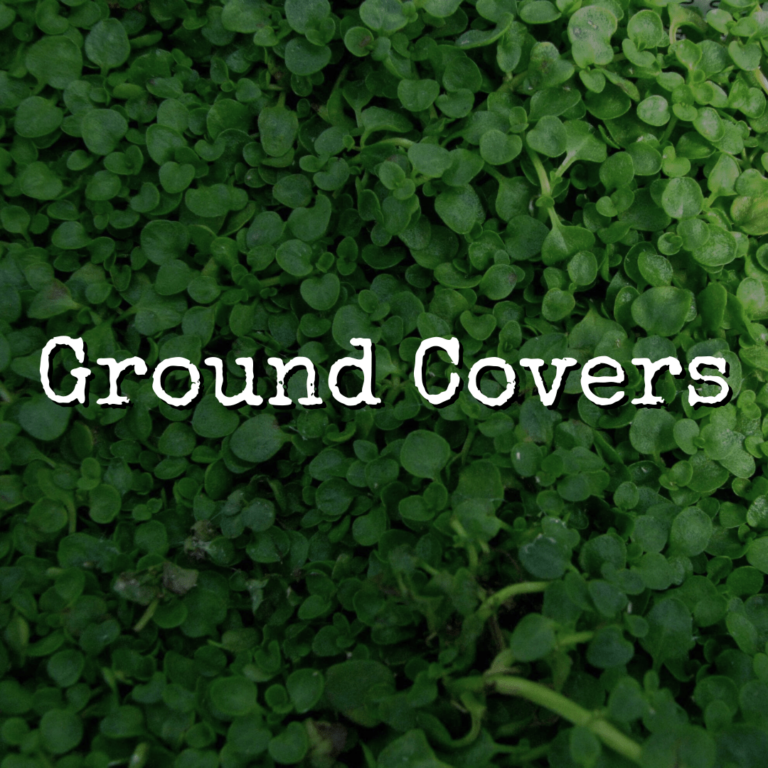
After growing many of these ground covers myself and talking to other gardeners about their preferences, I’ve compiled these plants into multiple categories and concluded what the most popular and adaptable ground covers are at this current time.
All your choices are divided into categories so you can find the best fit for you.
Contents
- Final Thoughts
If you find this guide helpful please leave a comment about your garden below!
Shade-loving Ground Covers Hardy to Your Climate (Zone)
Let this be the first filter to narrow your search toward an appropriate ground cover—What doesn’t grow in your climate, won’t be worth your time.
To find out what USDA zone you’re in use this map or for Canadians, this reference.
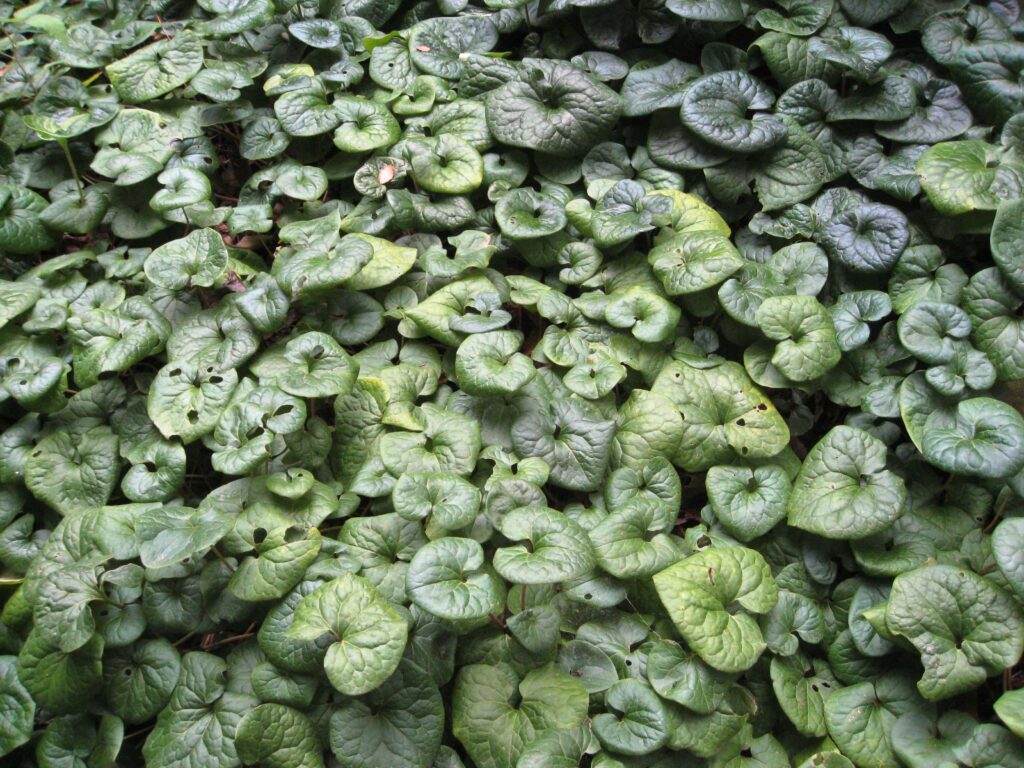
Even if you’re in a warmer growing zone (7-9), you’ll find plenty of options in all of the following posts:
The coldest of climates still have several options.
See: Zone 2 Edible Food Forest Full Plant List (Sorted By Layer)
Low Effort Ground Covers for Shade
Nature is designed to be low-effort, but in reality, the wild looks messy. Good nor bad, we often find ourselves wanting things to look neat, but without the effort of maintaining that status.
Fortunately, several ground-covering plants establish quickly and easily while suppressing weeds.

Fast-growing ground covers require less weeding or make it easier to suppress the growth of preexisting weeds.
While not the case for all of them they can, however, grow out of control once established. This requires manual pruning–which may or may not be necessary for you and your situation.
Since the below fast-growing options are for shady spaces, some of them likely don’t grow very well beyond the shade. This makes it easy to manage in the sense that they won’t overtake your sunny areas.
If fast or aggressive growth worries you, I’ve compiled the easiest shade-loving species in the list below.
I consider the easiest options to be more or less popular because they are generally adaptable with medium and dense growth habits.
What’s even better is that even dry shade has a list of appropriate ground covers. The options below either live through droughts or thrive in dry soil—taking the task of watering off your hands.
These are tough plants that do well even with a lack of sun and water—a difficult circumstance to accommodate.
Ornamental Shade-Loving Ground Covers
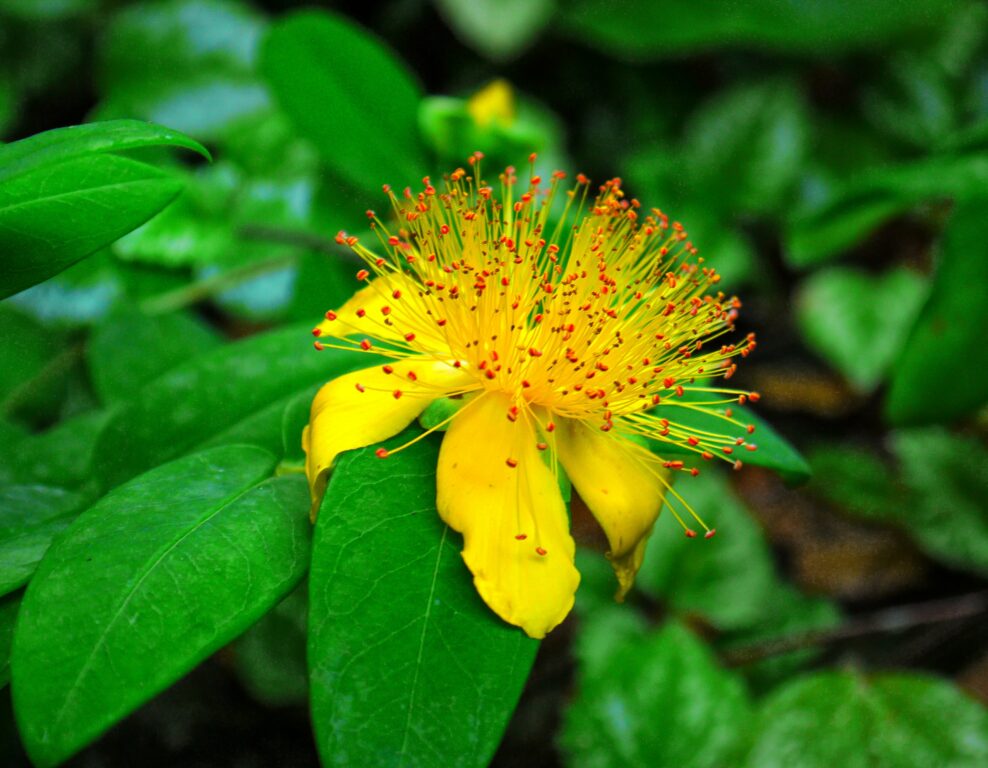
Ornamental ground covers are based on what the plant will look like throughout the seasons in a given landscape.
Evergreen options will offer vibrant foliage all year and semi-evergreens for the majority. Most evergreen plants require full sun, but I managed to put together a variety of options—some can grow in full shade and others in partial shade.
I’ve sorted the categories so you can find four combinations from full-shade true-evergreens and semi-evergreens that need at least partial shade.
Many low-growing ground covers are chosen for ornamental value due to their cute foliage, dense (lush) growth, and living-mulch service. Living mulch often provides a vibrant contrast to the height of other plants.
While it might seem unusual, many flowering ground covers offer plentiful blooms even in the shade. Lack of sun generally translates to a lack of flowers, it’s true. But these options will still provide you plenty whether you have full or partial shade spaces to fill.
Functional Ground Covers for Shade
Functional ground covers can mean a lot of things. So much so that, this category could encompass every post.
The general two ways this can work is that they serve a specific function for the landscape, or for you.
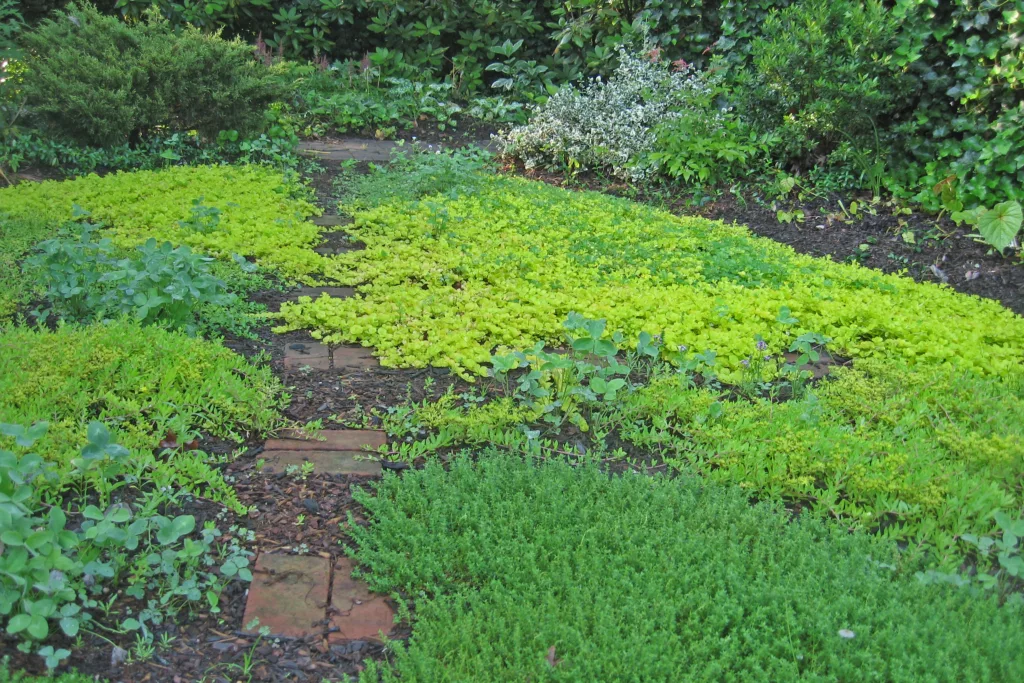
For an unstable landscape, one vital function that plants will serve is to prevent erosion. Plants, in general, are what hold any landscape together. The roots bind the soil in place among various sizes of rocks.
Specific plants, however, are selected for the purpose of erosion control. They either have a fast-growing habit or a shallow and fibrous root system that grips and holds big and small soil particles.
If you have a shade-casted slope and you don’t know what to plant, this is the post for you:
Ground covers are often meant as a living mulch between taller plants that cast shade beneath them.
But strong ground covers can also serve as a living pathway!
If you’re after a living pathway that won’t require a lawn mower, these shade lovers are for you:
Not only do they grow low and stay short, but they withstand foot traffic even with a lack of sun.
Edible Shade-Loving Ground Covers
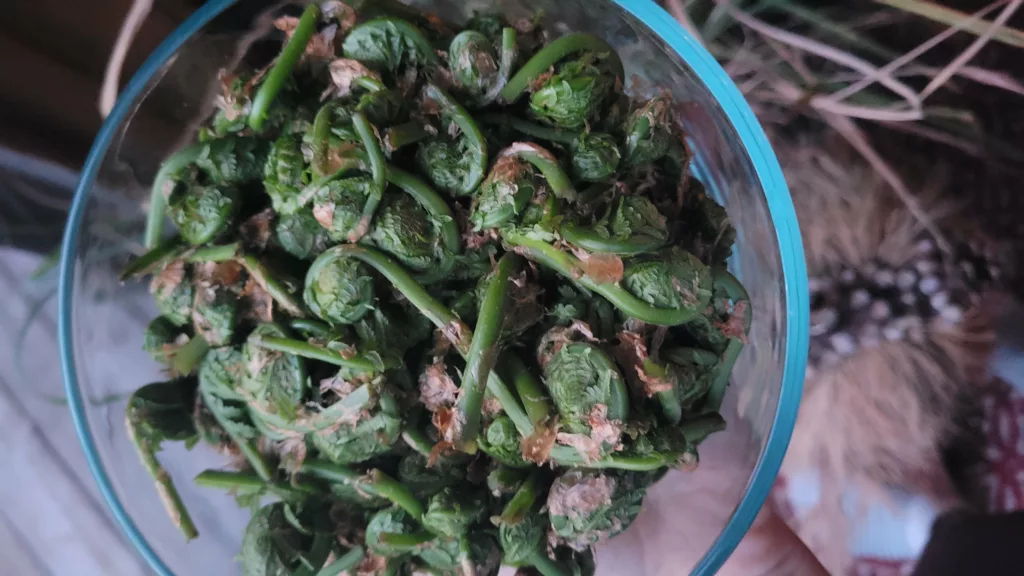
It’s common to assume that several edible herbs will grow plenty of vegetation (leaves) in the shade, but that’s all you’ll get.
Many strong culinary flavors and neutral-tasting herbs do grow as appropriate ground covers and in a shade position. Some can thrive in full shade while others require at least partial shade to remain lush and healthy long term.
What’s uncommon is fruit-forming ground covers that grow in shade! Most of these fruits will do their best with plenty of sun, however, some of them can grow (and produce fruit) in the shade!
Whether they do or don’t produce fruit in the spot you have available, their foliage is often interesting and also edible.
Finally, delicious shade-loving perennial vegetables. While they aren’t all low-growing, they make excellent ground covers and benefit from a shade position.
Many of these perennials are delicious and nutritious treats—free to eat seasonally, once planted and established.
Many of my favorite ground covers are on this list as they grow edible parts prolifically. We love eating from our gardens—sun or shade!
Final Thoughts

A handful of ground covers seem to pop up in many of the lists. This means they are very adaptable and are easy ground covers to grow in a variety of circumstances.
Bugleweed, phlox, and violets seem to show up the most.
Up Next: 24 Best Edible Ground Covers for Shade
Recent Posts
There’s no shortage of full-sun ground covers for zone 4 climates! Each plant in this list can withstand the frigid temperatures and also enjoy the hot sun in summer. Full sun means that a plant...
There's no shortage of full sun ground covers, not even in zone 3! Zone 3 climates offer hot but short-lived summers and very cold winters. So each plant in this list can withstand the frigid...
